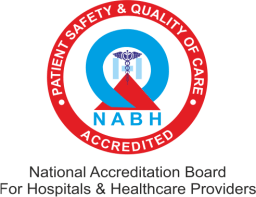Our knee joint is arguably the most prime joint in our skeletal system as it majorly contributes to the balance and movement of our body from one point to another. Despite all the wear-and-tear it undergoes, there is no other element which can allow the extreme mobility and flexibility provided by our natural knee joint. Hence, when you suffer from knee pain and disorders like arthritis, and your doctor suggests a knee replacement surgery, you might not feel ready to give up on it just yet, and you shouldn’t.
Although no surgeon would suggest a replacement surgery at initial stages, you need to be aware of every other treatment option that has proven to be effective in preserving and improving knee conditions. Based on the severity of the problem with your knee, alternative treatments that are either short-term or long-term can be prescribed to preserve your knee joint in the long run. Here are the most essential treatment options which you can discuss with your orthopedist to treat your knee instead of replacing it:
Physical Improvement Options:
Improving your physical strength and activities can greatly help in treating knee pain caused by stiffness or arthritis in its initial stages.
Exercise:
Daily movement exercises which strengthen the muscles around the knee joint are extremely helpful in reducing the pressure and exertion experienced by the knees and maintaining healthy body weight. Maintaining body weight should be your priority as every ten pounds you gain adds quadruple amounts of pressure on your knees.
Physical Therapy:
Physical therapists can help you resolve your knee problem with a specific set of therapeutic exercises to be performed over months or other techniques such as ice and heat treatment, electrical nerve stimulation, etc.
Seeking a certified therapist’s help ensures that you perform your exercises correctly and if they are proving to be effective in any way.
Medical Treatment Options:
Medication Courses:
Although no orthopaedist would prescribe multiple medications to a patient, there are some nonsteroidal anti-inflammatory drugs (NSAIDs) which have proven to improve knee stiffness and pain in mild to moderate arthritic knees.
glucosamine sulfate and hyaluronic acid supplements can also be prescribed to improve pain and mobility of the knees but they aren’t assigned easily due to the lack of proof of their viability.
Steroid Injections:
If the pain persists despite trying the above-mentioned options, your doctor may now suggest corticosteroid injections and hyaluronic acid injections, which lubricate the knee and drastically reduce the inflammation, pain and swelling caused by arthritis for long periods.
Minimally Invasive Surgery (MIS) Options:
MIS surgeries are performed through miniature incisions and tools to cleanse or repair a joint without damaging its surrounding tissues and muscles to ensure a quick recovery and maximum strength in that joint.
Arthroscopy:
If the cause of your knee pain is the bone fragments and cartilage pieces stuck around the joint, an arthroscopy can be performed to remove those fragments and cleanse the joint. These surgeries can greatly help in preserving your knee.
- ACL/PCL:
The cruciate ligaments namely, anterior and posterior (ACL & PCL) are the most important stabilizing structures in the knee joint. ACL/PCL injuries are more common amongst patients associated with contact sports or suffering from twisting injuries of the knee and less commonly following trauma. These injuries lead to painful swollen knee with difficulty in walking.
ACL is the major stabilizing structure amongst the two. ACL injuries are more common and are more disabling than PCL. Whereas PCL acts as the long axis of the knee and less commonly injured. However, both the injuries often have associated meniscal or other ligament injuries.
The ACL /PCL injuries often require a reconstruction of the torn ligament. In this procedure, the torn ligament is reconstructed with the patient’s own body tissues such as tendons and special implants are used for fixation of the reconstructed ligament in its place.
The procedure is done arthroscopically which is a minimally invasive keyhole surgery with an additional small incision for harvesting the tendon graft. The procedure requires minimum hospitalization. A well programmed supervised physiotherapy protocol including the knee bending and walking with aids is started on the very next day and the patient is discharged. The patient can resume his daily activities and work as early as three weeks post the surgery.
- HTO- HIGH TIBIL OSTEOTOMY
Tibial Osteotomy (HTO): – Often in the early stages of the arthritis of the knee, one of the two compartments (medial/inner & lateral/outer) is more involved than the other. More commonly the medial compartment is involved and the patients have symptoms of the involved compartment.
HTO, a joint preserving surgery, aims to realign the weight bearing axis of knee. In this procedure, a wedge of bone is either removed or added to the involved compartment and is fixed with a plate and screws & axis correction is achieved.
Procedure is indicated in young patients with unicompartmental arthritis and willing for a joint preserving surgery. The recovery time is approximately 6 to 8 weeks, with gradual physiotherapy assistance.
If you’re looking for a good orthopaedic hospital where you can find a suitable knee pain treatment in Pune, SaiShree Hospital can prove to be your best choice. With highly adept orthopaedists who provide all-round knee preservation solutions, you can find all the best ways to improve your knee pain conditions by simply consulting them. And you can do so by visiting the SaiShree Hospital website and booking your appointment today.


